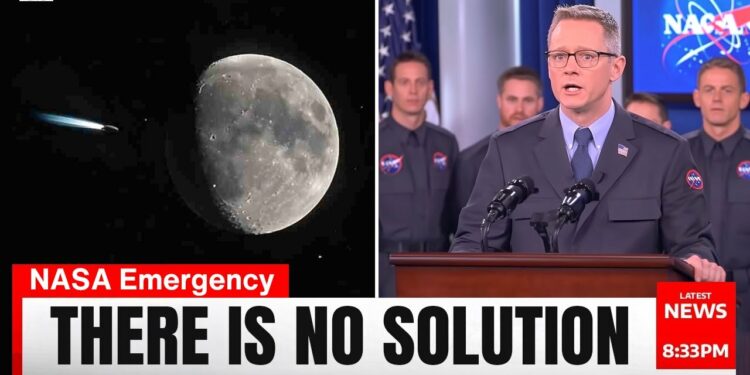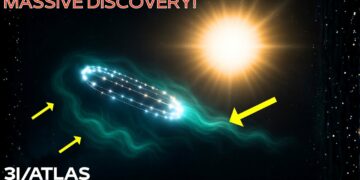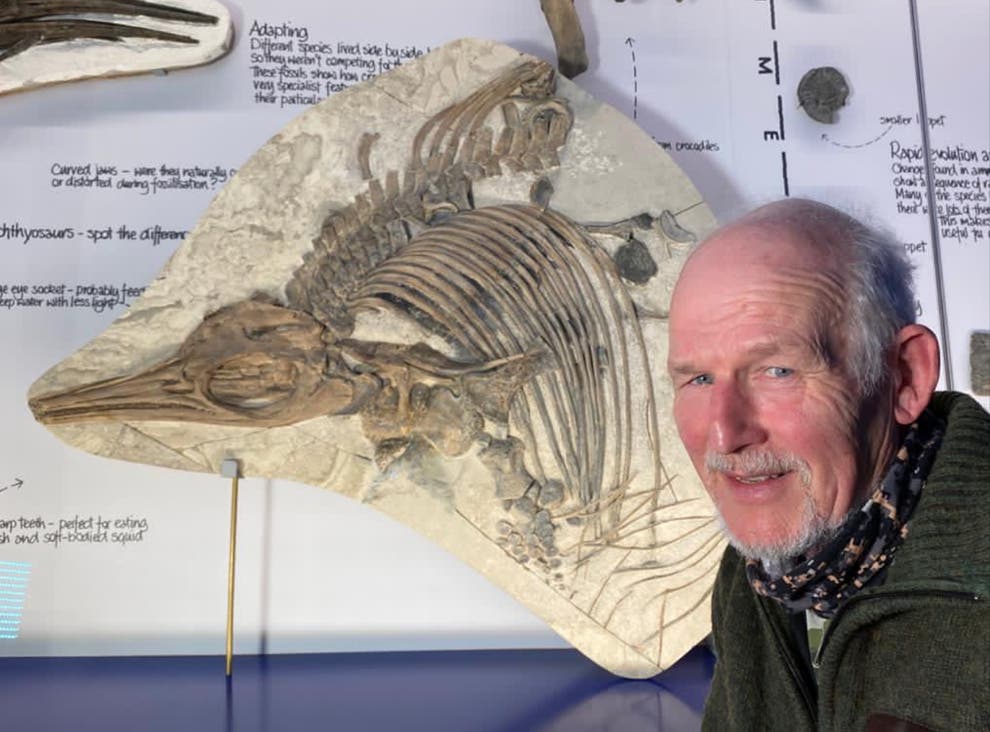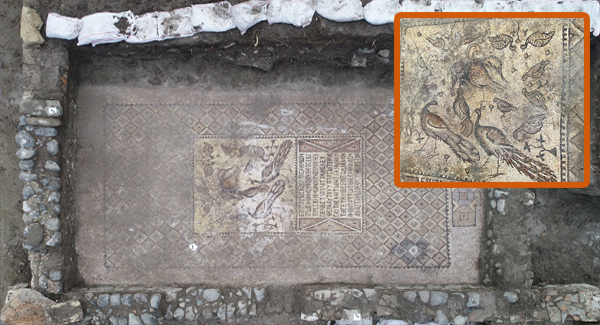The comet is captivating some of the nation’s top scientists. A Harvard professor is floating the provocative idea that it could be alien technology. On July 1, NASA’s ATLAS survey spotted a colossal object—named 3I/Atlas—racing toward our Moon. This is no ordinary space rock; it originated in another star system. Harvard scientists speculate it might be artificial, on a collision course with our lunar neighbor. This mountain-sized interstellar visitor is traveling at staggering speeds that would produce an explosion visible from Earth. Are we on the verge of witnessing the most spectacular cosmic event in human history? Could this alien visitor permanently alter the Moon? And the ultimate question: is this a random collision—or something deliberate?
The Discovery That Shocked the World
On July 1, the NASA-funded ATLAS survey detected an object dubbed 3I/Atlas streaking through our solar system at velocities that forced scientists to double-check their instruments. This wasn’t another local asteroid. Harvard astrophysicist Avi Loeb instantly drew global attention by proposing that 3I/Atlas could be alien technology dispatched from a distant star system. When a scientist of Loeb’s caliber from Harvard mentions extraterrestrial artifacts, the world listens.
What stunned researchers most was the object’s origin. Unlike typical asteroids born in our solar system, 3I/Atlas was ejected during the turbulent formation of a faraway star system, then wandered millions of years through interstellar space. It belongs to the rare class of interstellar objects, joining predecessors like ‘Oumuamua and 2I/Borisov. Yet 3I/Atlas has a far more dramatic agenda for our cosmic neighborhood.
A Trajectory Too Perfect to Be Random
Initial tracking suggested 3I/Atlas would simply skim past the Earth-Moon system. But as observatories worldwide refined the data, a chilling scenario emerged: the object is on a direct collision course with the Moon. What began as a curiosity now threatens to reshape our nearest celestial companion.
Scientists noted the trajectory’s uncanny alignment with solar-system planets—almost suspiciously precise. Combined with its interstellar velocity (far exceeding anything native to our system), some researchers question whether this is merely a random rock or a deliberately guided journey.
What Makes 3I/Atlas Unique?
- Motion: Regular asteroids orbit the Sun like cars on a fixed highway. 3I/Atlas blazes through at galactic speeds, proof of its long interstellar voyage.
- Size: Estimates range from several hundred meters to over a kilometer—imagine a mountain barreling toward the Moon.
- No Atmosphere on the Moon: Zero friction means the full kinetic energy slams directly into the surface.
- Alien Composition: 3I/Atlas carries materials from another star system, depositing a geological time capsule of exotic matter never before seen in our neighborhood.
The impact energy will dwarf anything humans have witnessed on a planetary body. With no atmosphere to dissipate the force, the explosion will be transferred entirely into the lunar crust—creating a blast visible in real time from Earth.
The Moon Is About to Be Scarred by Alien Material
The Moon has endured impacts for over 4 billion years, its craters a testament to that history. But an interstellar strike is poetic: matter from another star system etching a permanent mark on the familiar face we see nightly.
- Far-side impact: Seismic waves will ripple through the lunar interior, detectable by legacy instruments.
- Near-side impact: A debris plume could rise hundreds of kilometers, visible from Earth as a brilliant flash. The serene Moon would become the stage for cosmic violence on a geological scale.
Beyond spectacle, the Moon stabilizes Earth’s climate and tides. While 3I/Atlas won’t dislodge it from orbit, a new massive crater and mass redistribution could introduce subtle gravitational shifts.
What Happens When It Hits?
- Crater: Dozens of kilometers wide, excavating deep subsurface material.
- Ejecta: Fragments may escape, forming temporary dust rings—transforming the Earth-Moon vista.
- Seismic “bell”: Vibrations will map the Moon’s crust, mantle, and core, resolving formation mysteries.
- Scientific windfall: Freshly exposed material becomes a resource trove; mining companies may rush to the site for rare interstellar compounds.
Why Scientists Are Thrilled—and Worried
This is the first chance to observe a major planetary impact live. Telescopes will capture the event across the electromagnetic spectrum, turning the Moon into a natural laboratory.
Yet the event exposes a blind spot in planetary defense. Interstellar objects arrive unpredictably at extreme speeds—deflection is nearly impossible with current tech. Traditional asteroid-tracking programs focus on solar-system objects; 3I/Atlas reveals the need for next-gen early-warning systems and international sky-monitoring networks.
A Technological Mobilization
Space agencies are repositioning satellites, retasking lunar robots, and tuning instruments from radio to gamma rays. Private firms like SpaceX and Blue Origin are joining the effort. This collision is a dress rehearsal for rapid global response to cosmic threats.
Implications for Lunar Exploration
Future moon bases, resource extraction, and habitats will contend with a transformed landscape: new craters, dust blankets, and seismic shifts. Yet the impact site will be a scientific and commercial goldmine—exotic interstellar materials could spark a lunar mining boom.
A Shared Human Moment
Billions will watch the same sky as the Moon is reshaped by forces beyond human scale. It will unite humanity in awe—and remind us that our familiar cosmos remains wild and unpredictable.























